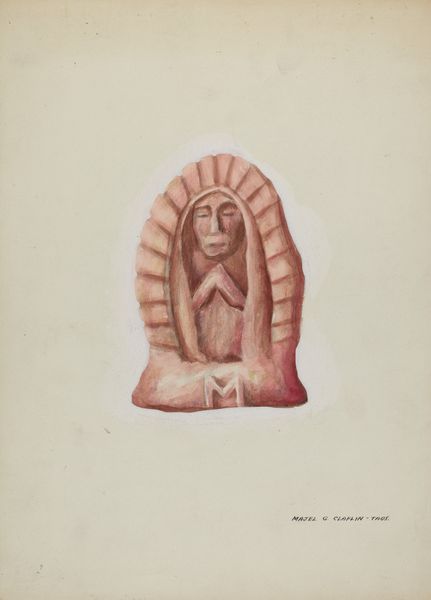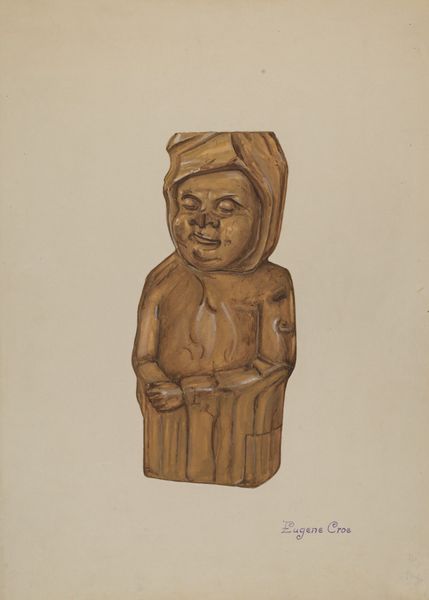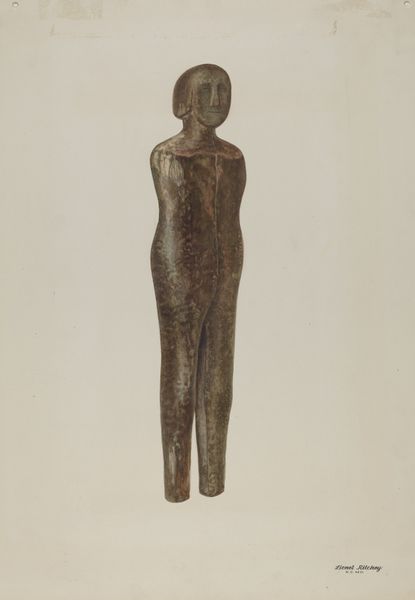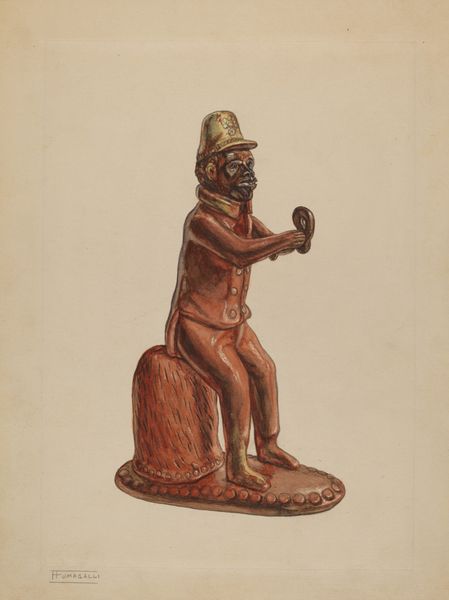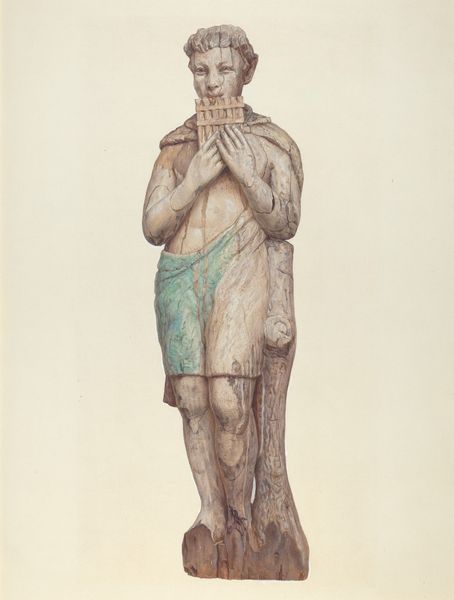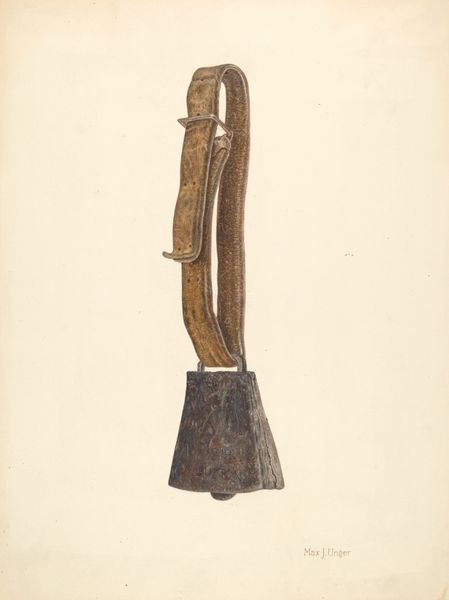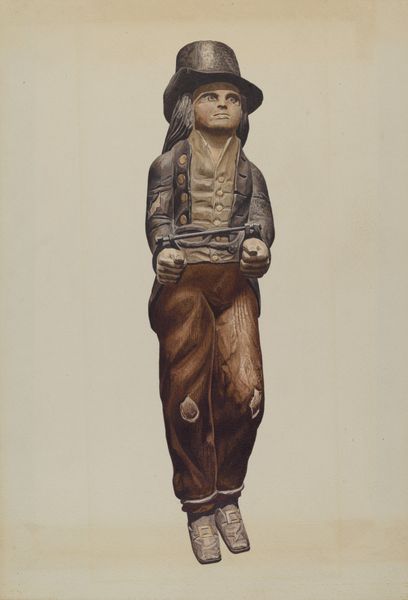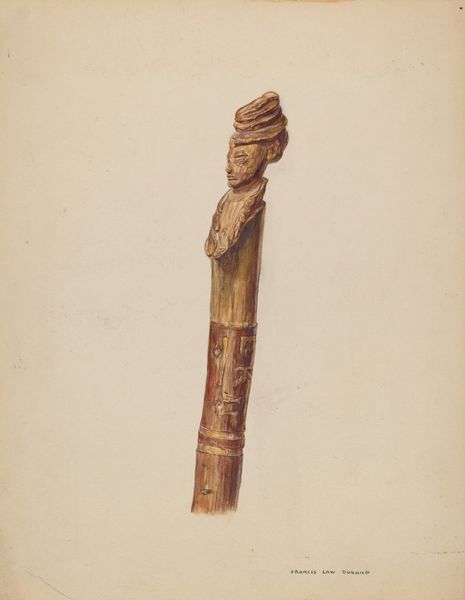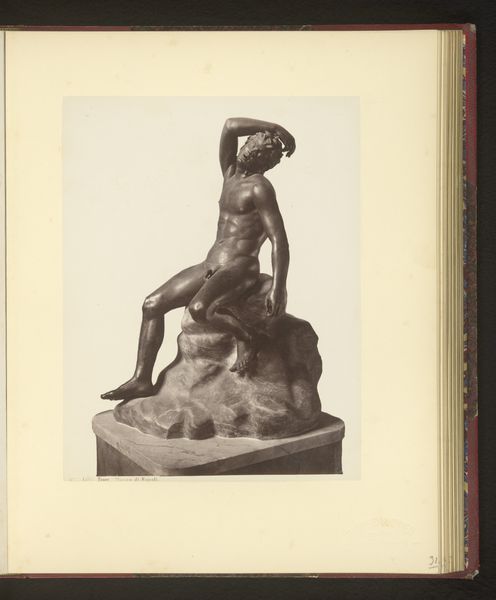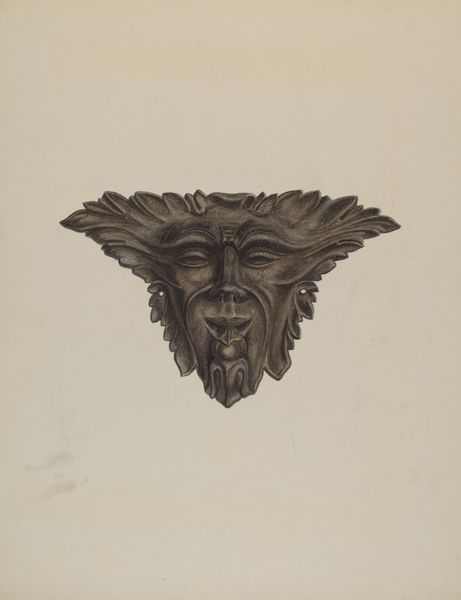
drawing, coloured-pencil, carving, wood
#
portrait
#
drawing
#
coloured-pencil
#
carving
#
figuration
#
pencil drawing
#
coloured pencil
#
wood
#
portrait drawing
Dimensions: overall: 27.9 x 35.4 cm (11 x 13 15/16 in.) Original IAD Object: 15"x30"x4"thick
Copyright: National Gallery of Art: CC0 1.0
Editor: Here we have Ethel Dougan’s “Carving ‘Soul in Purgatory’”, dated 1938. It appears to be a drawing, maybe with colored pencil, of a wooden carving. I find the spiky wooden surround quite striking; it creates such a powerful, almost trapped feeling. What's your take on this work? Curator: From a formalist perspective, consider first the interplay between the figure and the “spiky surround,” as you call it. Notice how the artist uses line – primarily vertical, assertive lines in the surround, contrasted with the rounded contours of the figure. This opposition generates tension, confining the subject through purely visual means, irrespective of symbolic content. Do you observe any tension between the colour palettes? Editor: Yes, I do. Both figure and frame share very similar reddish-brown hues, yet one feels smooth and softer, whilst the other sharp and almost violent due to its broken peaks. Is this also something that informs your view? Curator: Precisely. The restricted colour palette actually reinforces the sense of confinement and draws focus to the contrasting textures achieved by the artist’s deliberate mark-making with colored pencils. Even in a somber chromatic range, Dougan manipulates textural contrasts to underscore the subject's inner turmoil. Now, consider how that palette affects the surface. Editor: It’s so interesting how restricting the colors actually heightens the impact of the texture. I originally saw just a somewhat gloomy carving, but I appreciate the artist’s skillful juxtaposition that evokes so much emotional complexity. Curator: Indeed. Formal analysis enables us to see past surface impressions and apprehend the fundamental components of its powerful message through a concentrated view on colour, shape, and texture.
Comments
No comments
Be the first to comment and join the conversation on the ultimate creative platform.
